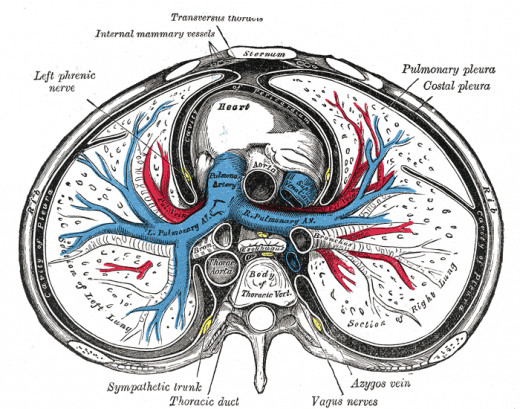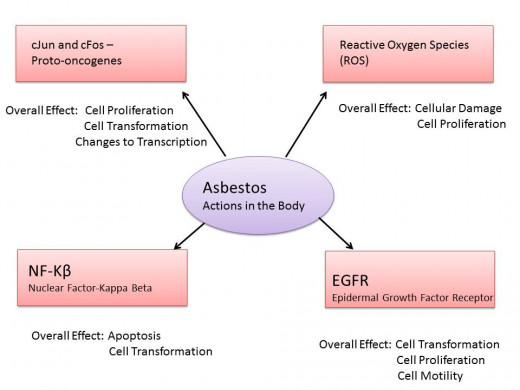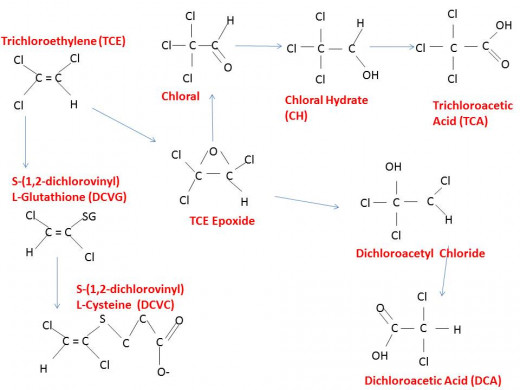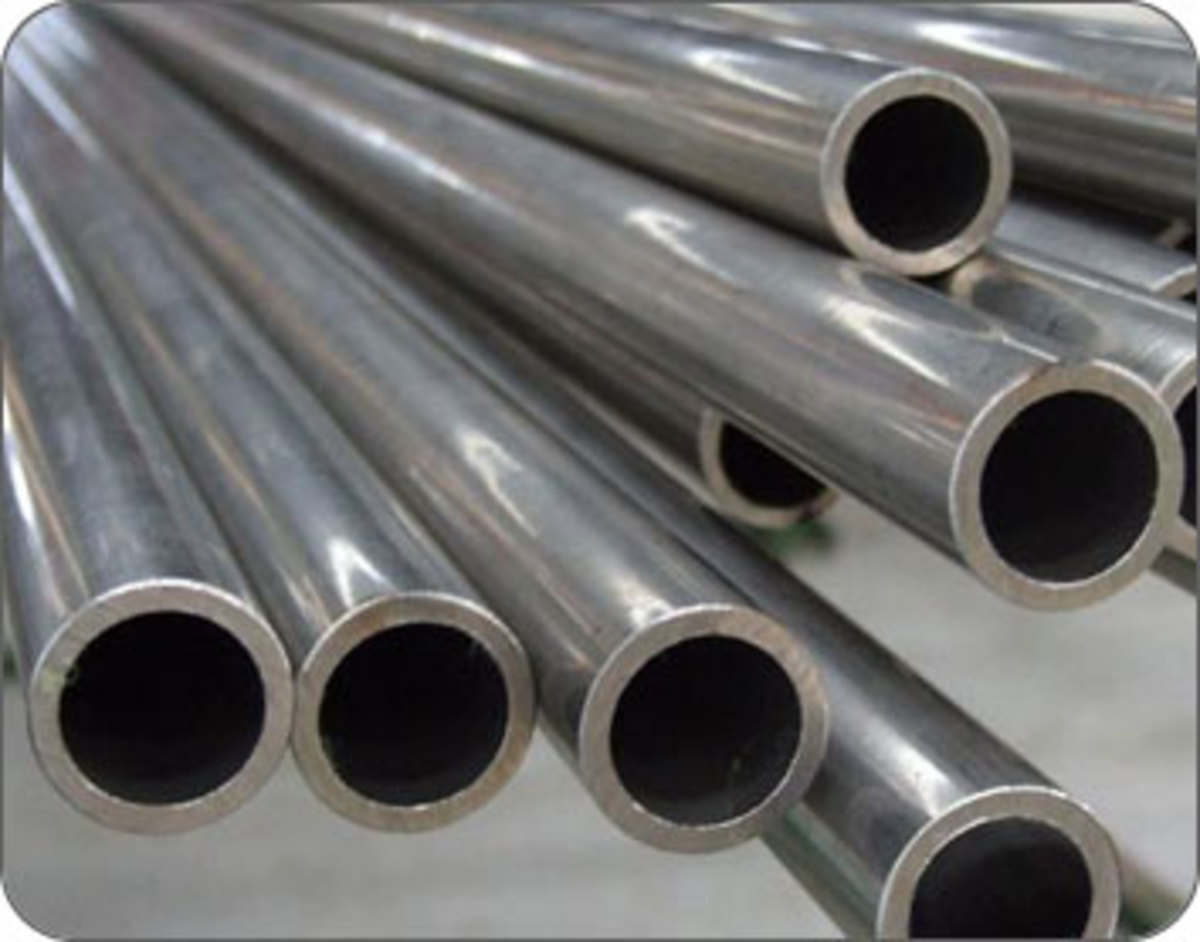Three Notorious Carcinogens
In the accompanying article we looked at how carcinogens are classified, including definitions of similar terms, like mutagen, as well as the International Agency for Research on Cancer (IARC) system for identifying and assessing carcinogens. In this article we'll look at three carcinogens of note- the ubiquitous asbestos and the two carcinogens exploited in popular culture- trichloroethylene from the infamous Woburn, Massachusetts case and Hexavalent Chromium exposure in Hinkley, California. Both were highlighted in well-known movie adaptations, A Civil Action and Erin Brockovich, respectively.
Related Hub
- Classifying Carcinogens
How things become classified as carcinogens as a primer to 'Three Notorious Carcinogens.'

Asbestos are a fairly well known group of carcinogens. The group contains six naturally occurring magnesium silicate compounds. In the late 1800s asbestos were found to make great building materials due to their insulation properties. Unfortunately since that time of using them within building materials ubiquitously, asbestos have been found to be carcinogenic. Asbestos are coupled to as many as 70% of all cases of malignant pleural mesothelioma. As the name implies, Mesothelioma is cancer of mesothelial cells- these cells line certain organs and thus this type of cancer can occur in a variety of body locations. The most common form of mesothelioma is that occurring in the pleural cavity of the lung. The complete pathology linking asbestos to cancer is still under investigation but researchers have a pretty good idea. The introduction of asbestos fibers into the human body naturally sets off the warning signals necessary to mount an immune attack. Unfortunately these fibers interact with macrophages in a way that preps the mesothelial cells for cancer. In addition to this interaction with immune cells, asbestos fibers influence and alter many cell pathways critical to the cancer state- properties including the conversion of proto-oncogenes to oncogenes, cell transformation, cell mobility, and proliferation; as well as cell cycle regulation and the apoptosis pathway.
Unfortunately due to the September 11th attacks in New York, survivors, rescuers, clean-up workers, and residents of Lower Manhattan and Brooklyn may see an increase in mesothelioma. A 2004 research article (Landrigan et al.) did a thorough analysis of multiple forms of environmental samples immediately after the attack and found asbestos along with lead, dioxins, polychlorinated biphenyls, and polychlorinated furans- some of which are carcinogens. As well the researchers looked into studies on the populations mentioned above and they have been found to have an increase in respiratory distress including productive cough and shortness of breath. Only time will tell if this courageous population will see an increased incidence of mesothelioma. With continued research unlocking the mechanism behind asbestos carcinogenicity hopefully some leads in therapy will be made if and when that occurs.

Some of the most commonly known carcinogens are environmental carcinogens where dramatic court cases gave way to literary and onscreen adaptations. Specifically there was the 1996 book and 1998 movie both by the name of A Civil Action outlining the situation in Woburn, Massachusetts and the movie Erin Brockovich (2000) about the Hinkley, California contamination. Both real-life stories regarded corporations contaminating groundwater with chemicals now considered to be carcinogenic. These compounds were proven to be the culprits behind an increase in cancer in these respective communities. In the Woburn case, two corporations were eventually charged for releasing trichloroethylene (TCE) causing a higher than normal rate of cases of childhood leukemia (this was the most profound example, as sadly there was a higher rate of other types of diseases seen in Woburn at this time as well). While in Hinkley, hexavalent chromium was contaminating the groundwater, which lead to many cases of a variety of cancers, including intestinal cancer.
Chromium naturally occurs in rocks and soil as well as being used in several big industries. In Hinkley, Pacific Gas & Electric (PG&E) used hexavalent chromium in cooling tower water, where the towers were necessary to cool natural gas compressor equipment and the chromium itself functioned to prevent rust. The cooling water was improperly stored when not in use, in an unlined pond, and from there it eventually made its way to the groundwater which was the water supply via wells for many residents in Hinkley. The hexavalent nomenclature refers to the oxidation state. Hexavalent chromium (+6), also known as chromium six, can cross cellular membranes and be converted to trivalent chromium (+3) which is then free to complex with DNA. Once hexavalent chromium is reduced to trivalent chromium it is stuck inside of the cell since the trivalent chromium cannot cross cell membranes. Once reduced to the trivalent form, chromium has limitless opportunity to mess with the cell’s DNA.
Like asbestos the exact pathway of chromium’s carcinogenicity is still being elucidated but researchers are currently solving the puzzle of its mechanism. A review on the subject by Nickens et al. in 2011 outlines the pathways chromium interferes with- including ROS (Reactive Oxygen Species) production, resistance to apoptosis, mutations involving DNA repair components, and survival signaling. Another thing hexavalent chromium has in common with asbestos is inhalation as its major route of destruction, an increased incidence of respiratory disease including lung cancer is seen in cases of occupational exposure to these carcinogens. There are dose-dependent effects seen when hexavalent chromium is ingested and due to the reduction to trivalent chromium is it plausible to see DNA damage in organs other than those along the respiratory tract. However, in animal studies intended to elucidate the California drinking water contamination-cancer link, there was a low increase in the incidence of oral and intestinal tumors seen as an effect of prolonged, extremely concentrated doses of hexavalent chromium.
Clip from Erin Brockovich (contains mild language)
Several industries in Woburn, MA where initially suspected to have a hand in the contamination of groundwater leading to an alarming rise in childhood leukemia. Ultimately two were held accountable, W.R. Grace- a chemical company- and UniFirst- an industrial dry cleaner company. Author Heneghan took an in-depth look at the case in a 2000 article and pointed out there were other hazardous compounds, including carcinogens, in the contaminated well water along with TCE. The other carcinogens found in the well water were linked to liver and kidney cancer but ultimately TCE was isolated as the prime suspect for causing the leukemia in Woburn. TCE was used by W.R. Grace as a degreasing agent in metal machinery but it also functions in dry cleaning among other purposes. After inhalation or ingestion of trichloroethylene, it will travel through the bloodstream, quickly make its way into the lungs, and the small portion that is not rapidly exhaled is processed in the liver. A lot of research is focused on TCE’s effect on the tumor formation in both the liver and the kidneys, specifically on TCE’s breakdown products for their role in cancer formation. Namely the role of dichloroacetic acid (DCA), trichloroacetic acid (TCA) and to a lesser extent Chloral hydrate (CH) in the formation of cancer within the liver while S-(1, 2-dichlorovinyl)-L-cysteine (DVCV) is being looked into for its role in kidney cancer formation.

Interestingly there are not a lot of hits that come back when ‘trichloroethylene’ and ‘leukemia’ are typed into research databases. The reason for that being the two are not really linked outside of this Woburn case and another in the early 90s in New Jersey. Even though TCE is now listed as a probable carcinogen its mechanism of action is linked to the kidneys and liver, the male reproductive system, the immune system, and fetal development- nothing that stands out as a link to the childhood leukemia seen in Woburn and New Jersey. The aforementioned multiple chemicals invading the water in Woburn may have had something to do with the incidence of leukemia, it’s possible some sort of combination action was seen in Woburn. As mentioned, several corporations were first targeted by lawsuits where a judge threw out the case against the tannery but later the EPA was able to come up with enough evidence to prove that both the tannery and W.R. Grace were polluting the Woburn environment. Proof was never needed against Unifirst and Grace in the childhood leukemia case since both companies ending up settling out of court before a verdict was decided. Another possibility explored is the idea that the TCE did cause the leukemia but functioned in a very indirect way. For example a group of researchers, Fujita et al., have looked into the link between TCE exposure and its effects on heme biosynthesis and in turn heme’s effects on gene transcription. As of 1995, trichloroethylene has been listed in Group 2A on the carcinogen classification scale, while hexavalent chromium belongs in Group 1 as of 2012. At the time of each of these landmark cases the agent in question was not on this carcinogen list yet. Interestingly in both cases the companies were held liable for the cancer even though even now the research isn’t conclusive linking TCE to leukemia or Hexavalent Chromium to cancers occurring in places other than the respiratory system.








